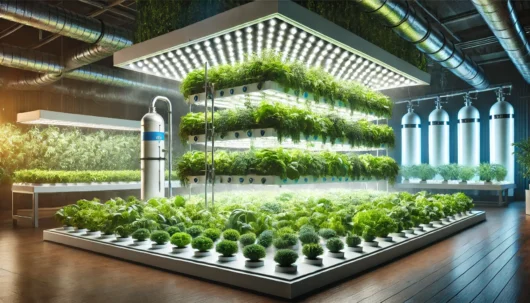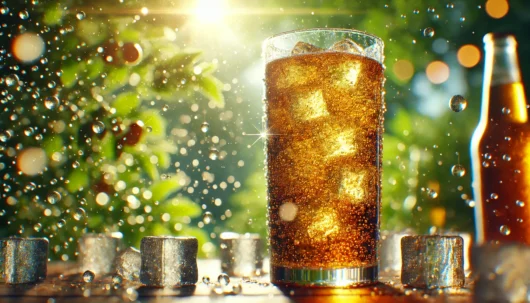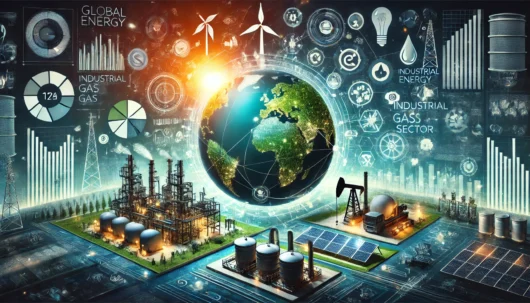Beverage-grade carbon dioxide (CO2) is essential in the food and beverage industry, serving as the effervescent force behind your favourite carbonated drinks. As you sip a soft drink or beer, the experience of those stimulating bubbles is courtesy of high-purity, food-grade CO2. This special classification of CO2 is produced and handled according to stringent industry standards to ensure it is safe for consumption. The process involves several purification stages and careful monitoring to meet the established purity criteria, with a typical benchmark of 99.9% purity.
Understanding the beverage-grade CO2 production process is critical, especially if you are involved in the beverage industry. This process uses equipment designed to handle the gas safely, maintain its quality, and prevent contamination. Furthermore, each production facility must operate under a documented system of quality management, often developed with methodologies like HACCP (Hazard Analysis and Critical Control Points) to assess and mitigate food safety risks. This involves analysing both the raw gas process and the feedstock.
The reliability and safety of the CO2 you use impact product quality and consumer health. Thus, it is paramount to ensure that the CO2 supplied for your beverages adheres to the quality guidelines set by organisations such as the International Society of Beverage Technologists (ISBT). These guidelines specify key quality parameters and impurity limits for beverage-grade CO2, aligning with the objective that the delivered product is consistently suitable for drink carbonation and other food processing applications.
Core Production Process
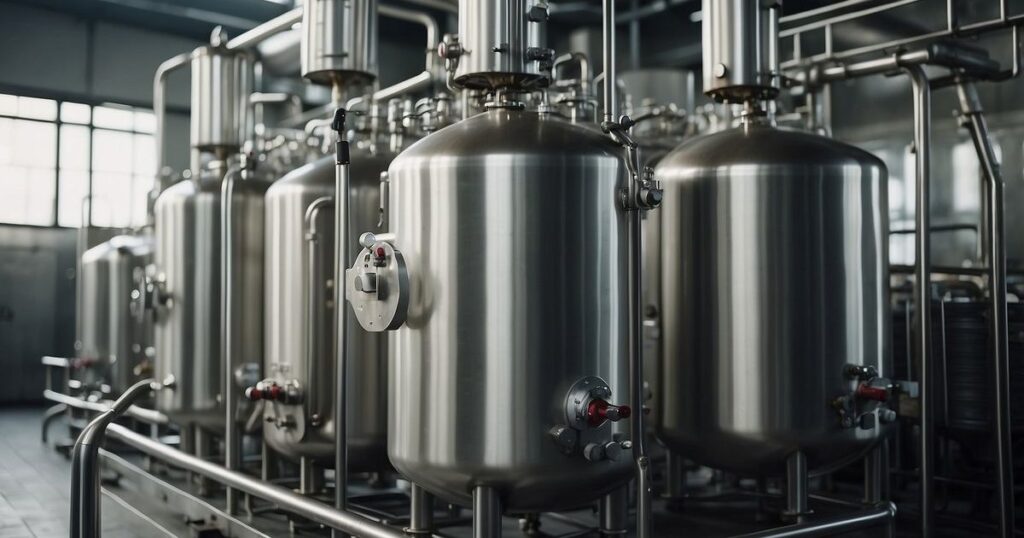
In the production of beverage-grade carbon dioxide (CO2), you’ll encounter a multi-stage process that begins with the extraction of raw gases and spans to rigorous quality control measures to ensure the purity and safety of the final product.
Source and Extraction of Raw Gas
Raw CO2 is commonly obtained from natural wells, ethanol production during fermentation, and as a byproduct from ammonia and other chemical plants. Your feed gas source requires careful selection to minimise CO2 emissions and ensure a sustainable production cycle.
Purification and Filtration
Next, the extracted CO2 must undergo purification to remove contaminants like water and oxygen. This often involves a multi-adsorbent approach to capture impurities effectively. In-line filtration systems are also utilised to enhance the purity levels necessary for beverage production.
Carbon Dioxide Compression and Liquefaction
The purified CO2 gas is then compressed and cooled to a liquid state. This process typically involves multi-stage compression and refrigeration, bringing the gas to a temperature and pressure suitable for condensation into liquid CO2.
Final Processing and Quality Control
Once liquefied, the CO2 undergoes final processing, which may include deodorisation and drying to meet the stringent standards for beverage-grade CO2. Quality control measures such as gas chromatography-mass spectrometry (GC-MS) analysis are crucial to ensure that the final product is free of impurities and safe for consumption.
Safety and Compliance Measures
Safety protocols are paramount throughout the entire CO2 production process. Your facility must ensure proper training for handling compressed gas, adequate ventilation systems to manage potential leaks, and strict compliance with local and international CO2 production and beverage safety standards.
Packaging, Storage, and Distribution
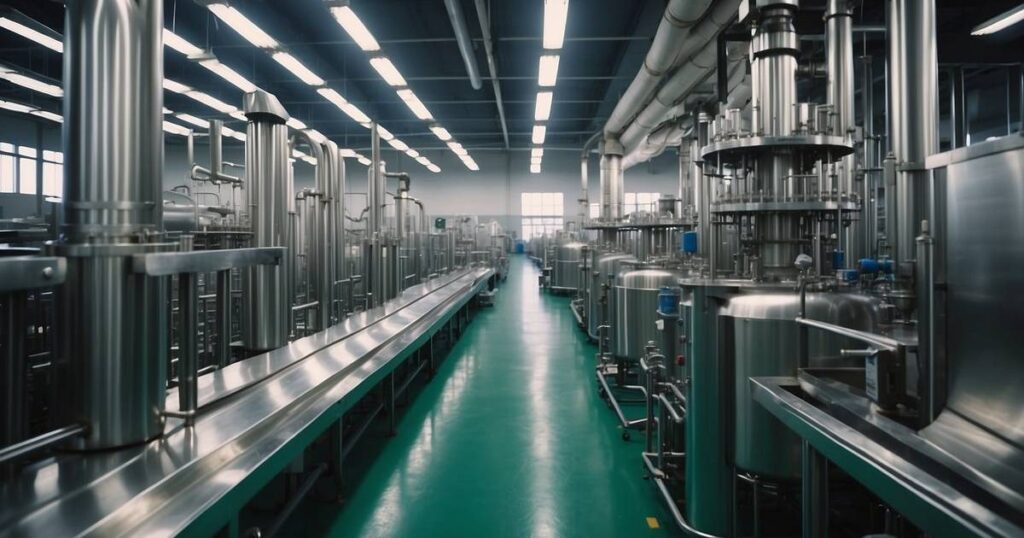
When producing beverage-grade CO2, meticulous processes ensure the gas’s integrity from production to its endpoint use in beverages. Proper handling and storage maintain the quality, while a robust supply chain guarantees consistent delivery.
Cylinder Filling and Handling
In packaging, manufacturers compress beverage-grade CO2 and transfer it into steel cylinders under strict safety protocols. Your equipment must also meet industry standards to maintain gas purity. Filling must occur in a contamination-free environment, with each cylinder undergoing capping to prevent leaks.
Preservation of CO2 Quality
Maintaining the quality of CO2 involves storing the cylinders in a cool, dry place to ensure shelf stability. Modified Atmosphere Packaging (MAP) techniques may also be employed, effectively extending the shelf life of perishable products by altering their atmospheric conditions.
Transportation and Supply Chain Management
Logistics play a vital role during transportation in preventing supply shortages in the service industry. Additionally, breweries and operators in the beverage industry depend on an uninterrupted gas supply. Installation of equipment for gas delivery must preserve carbon dioxide’s integrity to prevent contamination.
Usage in Beverage Production
The installation of beverage gas systems should comply with industry standards when brewing and carbonating drinks. Moreover, proper installation ensures that the quality of the beverage-grade CO2 is maintained until it’s used for carbonating beverages, ensuring the desired effervescence in carbonated drinks.
Frequently Asked Questions
Understanding the steps involved in producing the high-quality CO2 required for your beverages is crucial for ensuring purity and adhering to safety standards.
What are the steps involved in manufacturing beverage-grade CO2?
The manufacturing process for beverage-grade CO2 typically involves extraction from industrial sources, purification to remove impurities, compression to convert it into a liquid state, and storage under pressure. Your beverages get the fizz from CO2 that meets stringent quality criteria.
How does on-site CO2 generation work for the beverage industry?
On-site CO2 generation systems allow you to produce your CO2 rather than purchasing commercial supplies. These systems ferment carbohydrates in closed systems, producing CO2 as a byproduct. The process then involves capturing, purifying, and using the CO2 for carbonating drinks.
Can we use carbon dioxide from industrial sources in carbonated drinks?
Yes, CO2 from industrial sources can be utilised for carbonated drinks after a rigorous purification process. This also includes filtration, absorption techniques for removing impurities and hydrocarbons, and dehydration to ensure the gas meets food-grade standards.
What are the safety measures for storing CO2 in tanks at beverage production facilities?
Safety measures include storing CO2 in tanks designed to handle high pressure, regular maintenance checks to detect any potential leaks, and ensuring tanks are kept in a well-ventilated area to avoid the risk of CO2 buildup, which can pose health hazards.
How does the production of CO2 differ for various types of beverages?
CO2 levels vary between different types of beverages. For instance, soft drinks require higher CO2 content for a sharper fizz, while the production keep beer’s CO2 content at lower levels for a smoother taste. Manufacturers tailor production to control the saturation level suited for each beverage type.
What technologies purify CO2 for beverage use?
Technologies in CO2 purification involve several filtration stages to remove particles and oil, chemical scrubbers to purify the gas of undesirable compounds, and molecular sieves for drying. These processes ensure that the CO2 is tasteless, odourless and fit for consumption.
